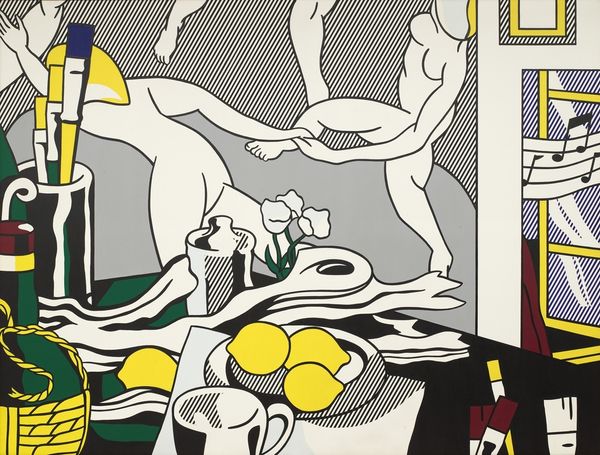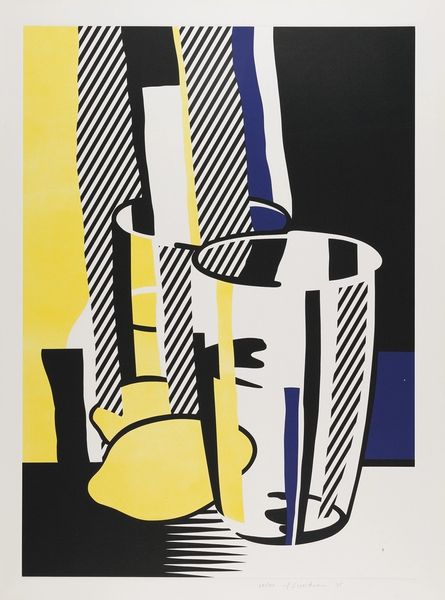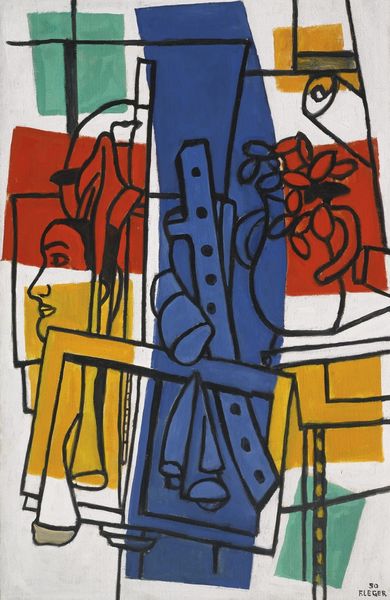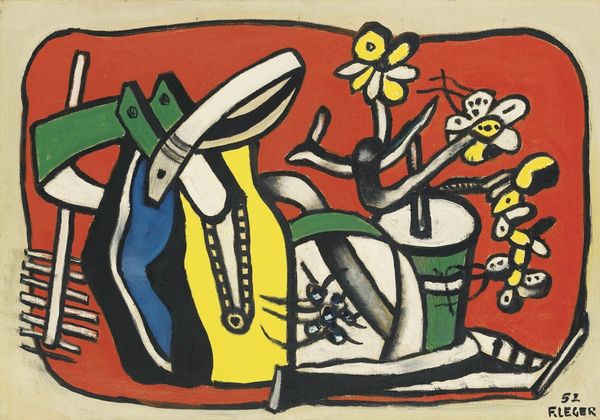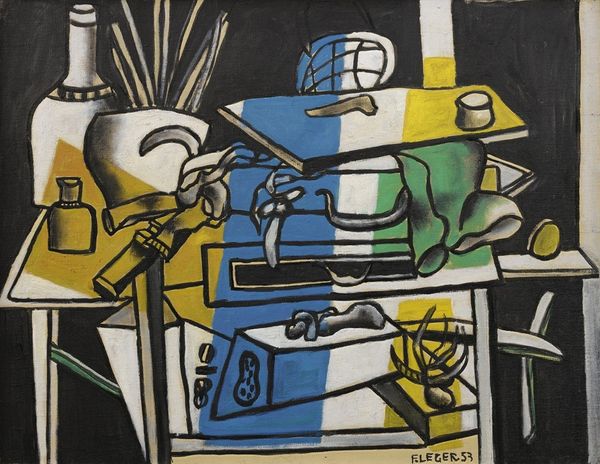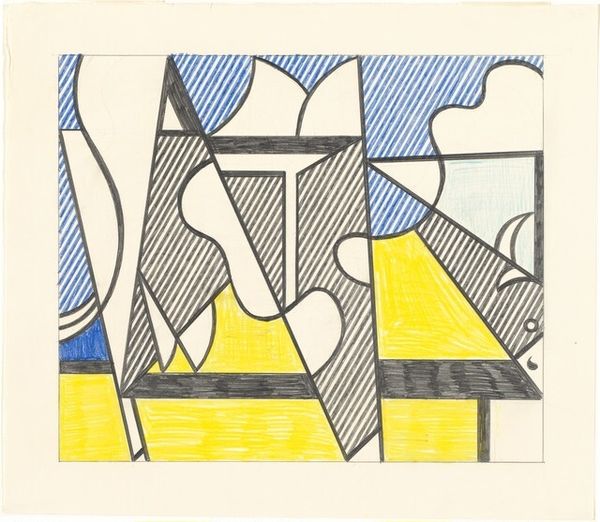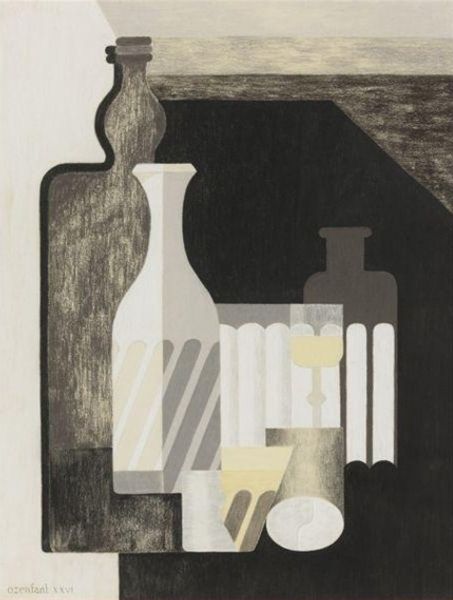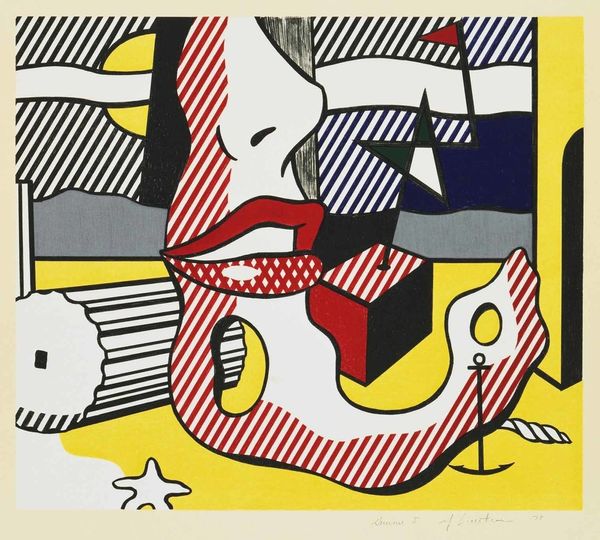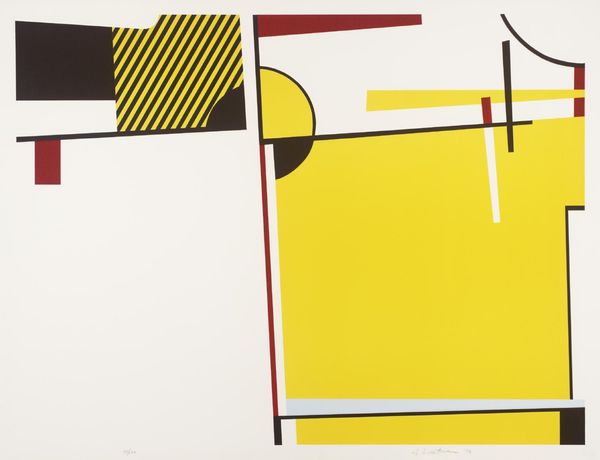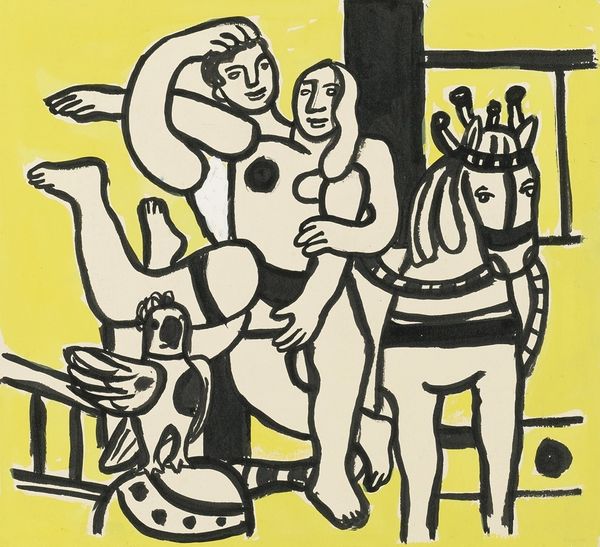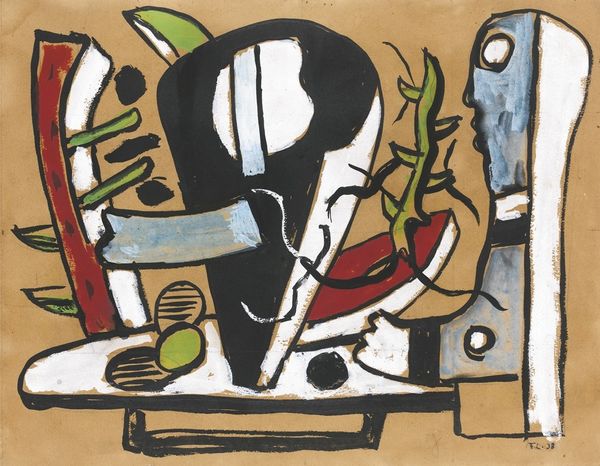
Dimensions: 91.1 x 113.8 cm
Copyright: Roy Lichtenstein,Fair Use
Curator: Roy Lichtenstein’s "Still Life with Windmill," completed in 1974, presents us with an intriguing play on familiar forms. Executed in acrylic paint, it typifies his Pop Art sensibilities through bold lines and a distinct color palette. Editor: It’s instantly striking – quite graphic, and a bit cold, almost sterile. The geometric precision makes it feel detached, despite the everyday subject matter of fruit, a pitcher, and the pastoral view through the window. Curator: Absolutely, and that detachment is central to understanding Lichtenstein’s project. Here, he appropriates the traditional still life genre, flattening it, and, in essence, reproducing it through the lens of mass media. Think about the cultural context: the 1970s saw a surge in postmodern thought, questioning originality and authorship. Editor: So, this is more than just a painting of a table setting. The painting seems to explore how mass production and consumer culture have reshaped our perception, and perhaps our values, no? Is he pointing to a loss of authenticity by representing subjects so rigidly, or, as is oft suggested, elevating ordinary subjects? Curator: Precisely. Lichtenstein positions himself critically, highlighting the role of reproduction in art and culture. Notice how he transforms recognizable images – a windmill, a pitcher – into simplified, almost cartoonish forms. It echoes commercial printing processes, underlining his commentary on mass dissemination. There’s a disruption of traditional artistic values in favour of reproducibility. Editor: What's interesting is that while his work comments on mass production, the market has ironically transformed him into a brand. I imagine the conversations around how museums, and institutions alike contribute to commodification must have included the effect on artists like Lichtenstein. Curator: A poignant irony, certainly, and it further complicates how we situate his work within the art world. Lichtenstein raises questions that remain relevant today concerning the pervasive impact of media on our visual landscape and our complex relationship to notions of authenticity, appropriation, and value in art. Editor: Indeed, this seemingly simple composition encourages a multilayered dialogue on consumerism, and how art is re-consumed as product. I certainly have some things to rethink.
Comments
No comments
Be the first to comment and join the conversation on the ultimate creative platform.
